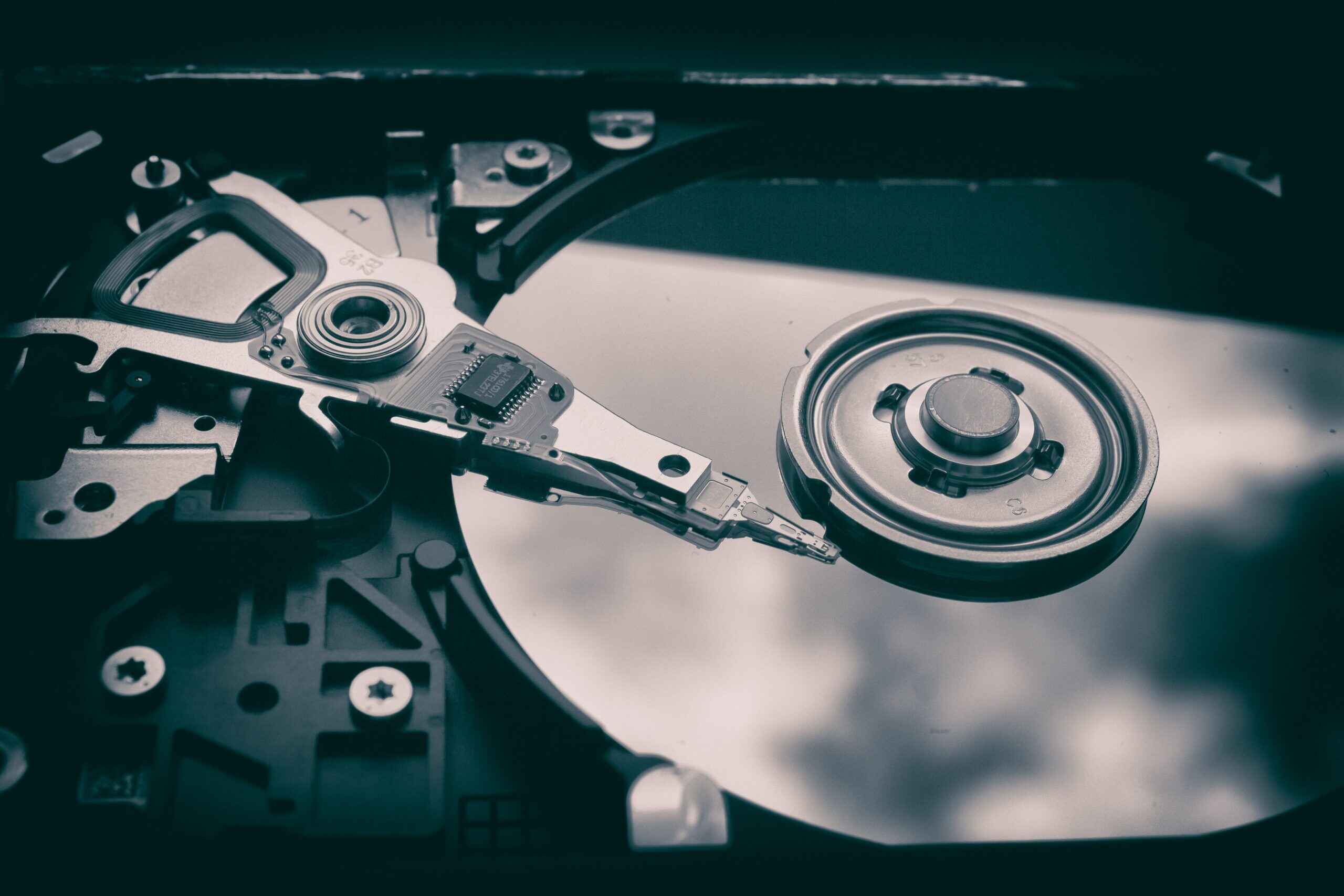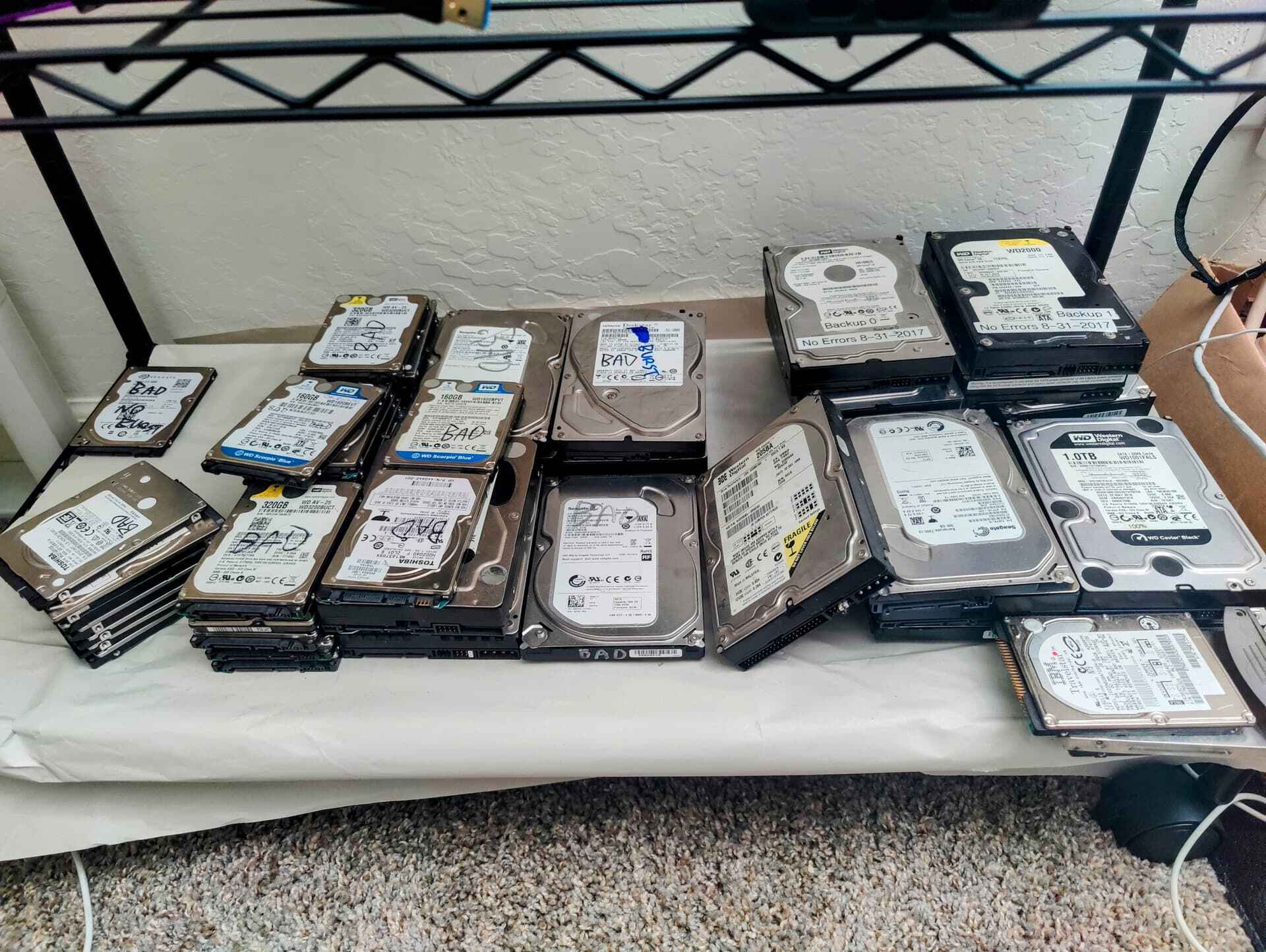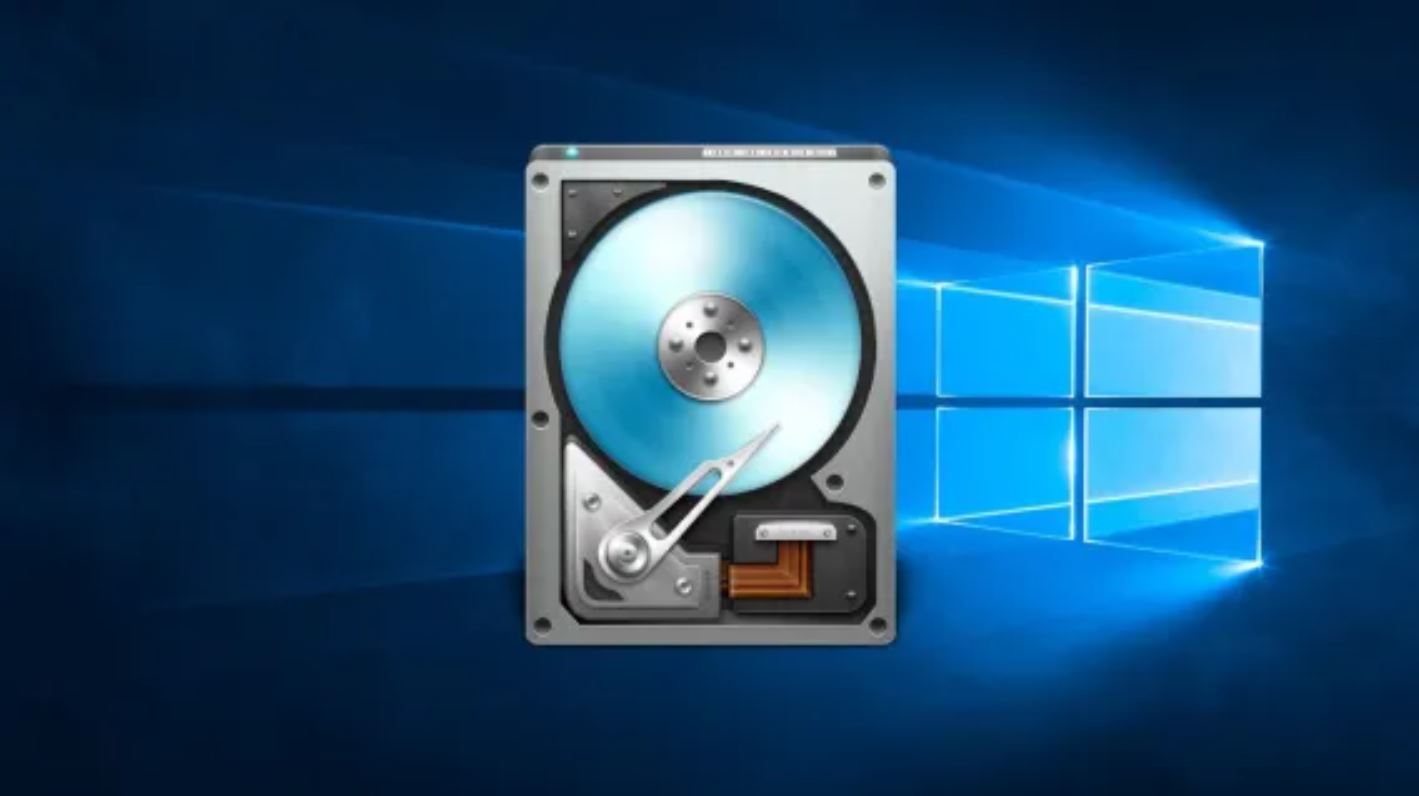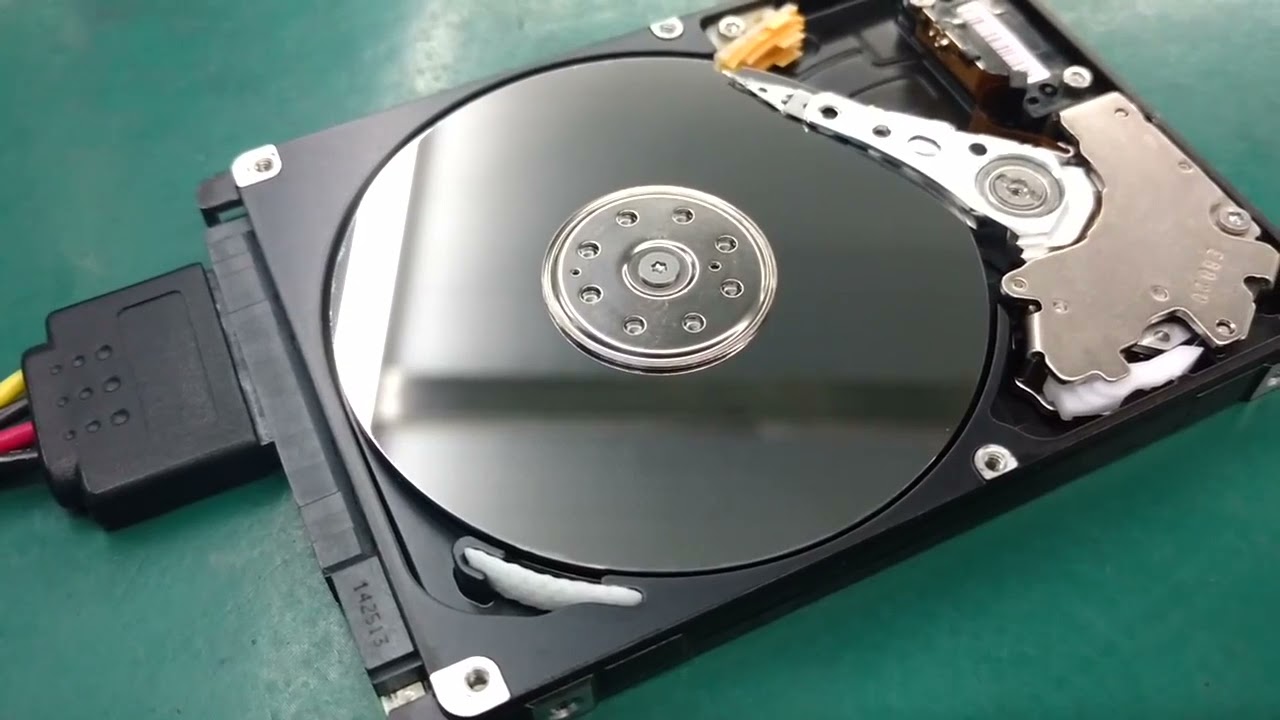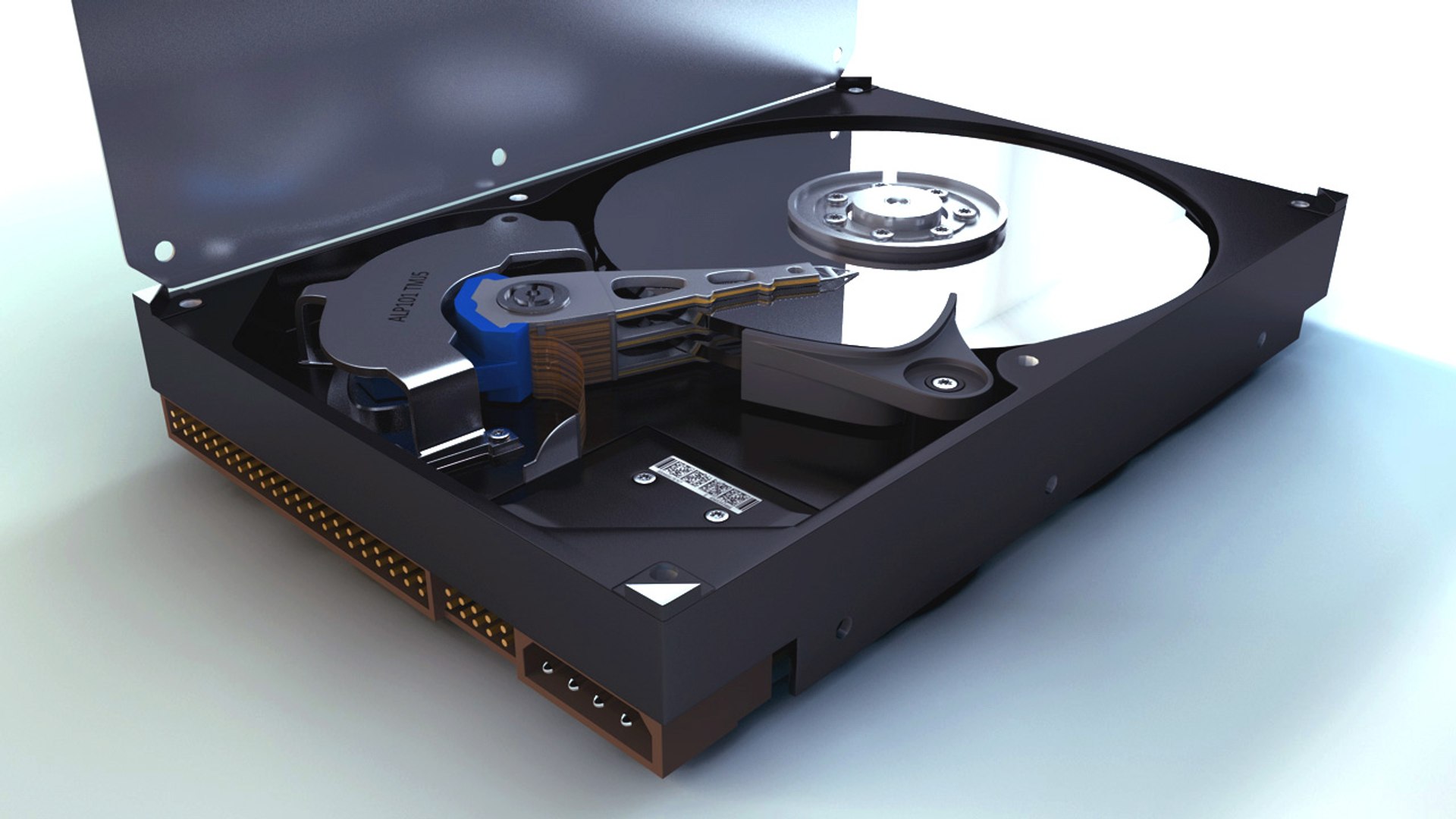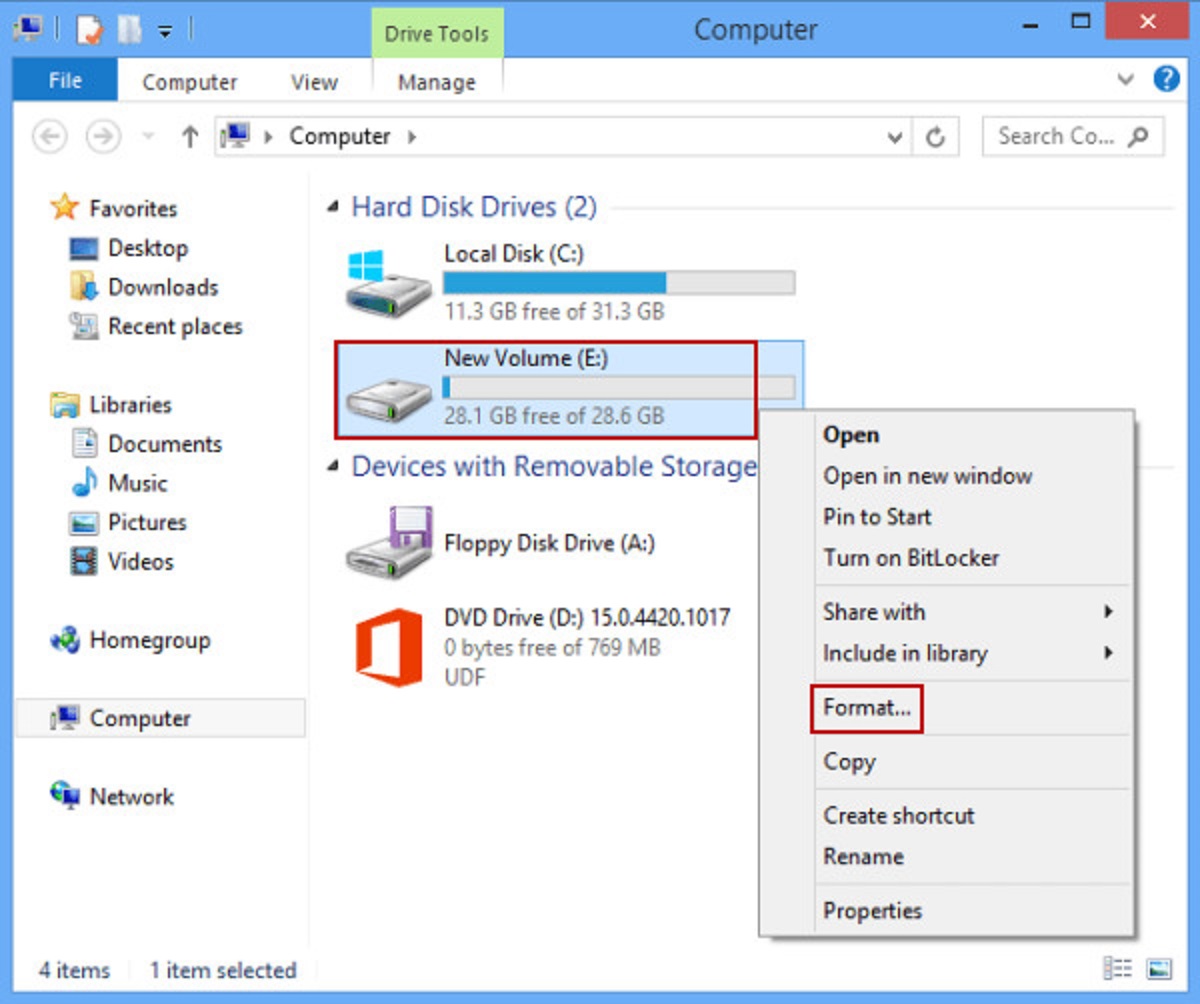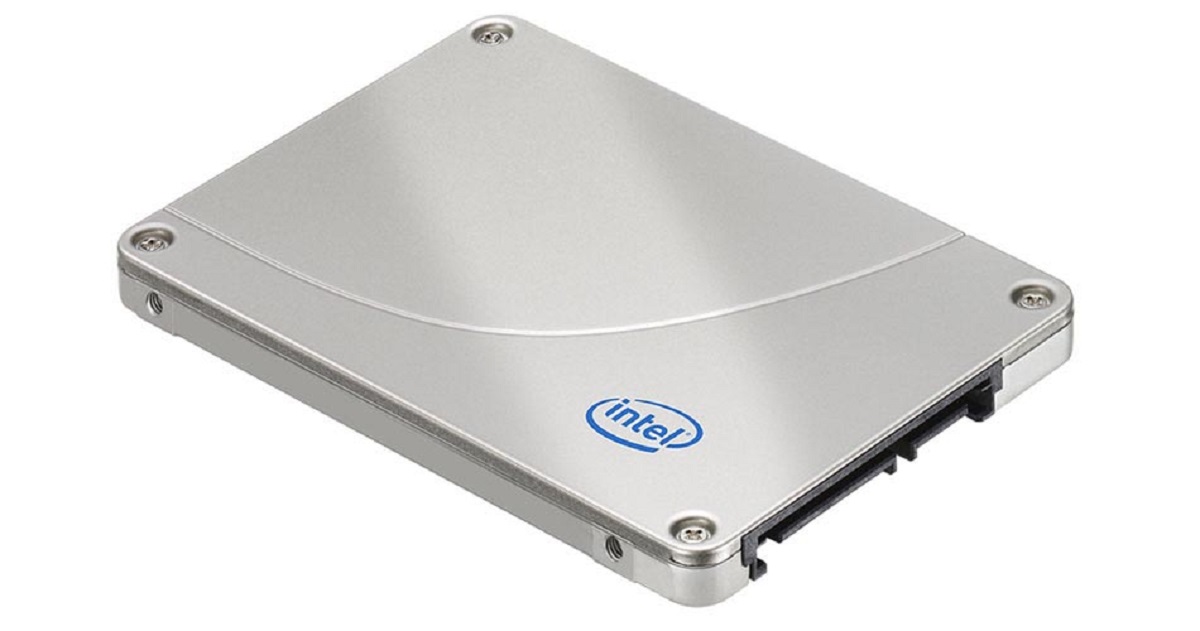Introduction
When we think about the storage capacity of a physical hard disk drive (HDD), we often wonder how all our files, documents, and media can be stored within it. To understand this, we need to dive into the world of data transfer and explore the smallest unit of data in a hard disk drive.
Data transfer is the process of moving or transmitting data from one location to another. In the realm of HDDs, this transfer takes place between the computer’s memory and the storage device. The ability to transfer data efficiently is crucial for the smooth operation of the computer and the accessibility of stored information.
In this article, we will unravel the intricacies of data transfer in a physical hard disk drive and discuss the smallest unit of data involved in this process. By understanding how data is transferred and stored in an HDD, we can gain a deeper appreciation for the technology that enables us to store vast amounts of information in a compact device.
So, let us embark on this exploration of data transfer and discover the fascinating world of the smallest unit of data in a physical hard disk drive.
The Concept of Data Transfer
Data transfer refers to the movement of data from one location to another. In the context of a physical hard disk drive (HDD), it involves transferring data between the computer’s memory and the storage device. This process is essential for accessing and manipulating stored information.
Data transfer occurs through the use of electrical signals that carry binary code, which represents the data in a digital format. These signals travel through various components within the HDD to read and write data onto the spinning magnetic disks. Understanding the concept of data transfer is crucial in comprehending how the smallest unit of data is manipulated and stored.
When a computer needs to retrieve or save data, it initiates a read or write operation. During a read operation, the computer sends a command to the HDD, requesting specific data. The HDD’s read/write head locates the desired data on the magnetic disk and reads the binary code associated with it. This code is then converted back into the original format and transmitted to the computer’s memory for processing.
On the other hand, during a write operation, the computer sends a command along with the data it wants to store. The HDD’s read/write head locates the appropriate location on the magnetic disk and converts the data into binary code. The binary code is then written onto the disk, allowing for future retrieval and use.
It is important to note that data transfer in an HDD occurs at varying speeds, measured in terms of transfer rates. These rates can depend on several factors, including the HDD’s design, the computer’s interface, and the quality of the cables connecting the two.
With the concept of data transfer elucidated, we can now delve into the internal components of a hard disk drive to understand how data is stored and manipulated at the smallest unit level.
Understanding Hard Disk Drives
Hard Disk Drives (HDDs) are widely used for data storage in computers, laptops, and server systems. They consist of several components that work together to store and retrieve data. By understanding the structure and functionality of HDDs, we can gain insight into how data is managed within them.
The primary component of an HDD is the spinning magnetic disk, also known as a platter. These disks are coated with a magnetic material that allows data to be stored in the form of magnetic patterns. The number of platters in an HDD can vary, with each platter having two surfaces where data can be written.
Each platter in an HDD is divided into concentric circles called tracks. The tracks are further subdivided into smaller units known as sectors. Sectors are the basic units of data storage and are used to organize and access data. The size of a sector is typically 512 bytes.
One of the key components involved in data transfer within an HDD is the read/write head. This tiny electromagnet hovers just above the surface of the platter and is responsible for reading and writing data onto the magnetic surface. The read/write head is attached to an actuator arm that moves it across the platter to access different tracks and sectors.
As the platters spin, the read/write head hovers over the surface and can rapidly read data from or write data to the magnetic material. This constant rotation and movement allow for efficient data transfer within the HDD.
Additionally, to ensure the accuracy of data storage, HDDs use error correction techniques. These techniques involve adding redundancy bits to the data, allowing for error detection and correction during the data transfer process.
Understanding the structure and components of HDDs provides a foundation for comprehending the smallest unit of data transfer within these drives. In the next section, we will explore the fundamental building block of data: the bit.
Components of a Hard Disk Drive
A hard disk drive (HDD) is a complex device that consists of several components working together to store and retrieve data. Understanding these components is essential in comprehending the intricacies of data transfer and storage within an HDD.
1. Spinning Magnetic Disks (Platters): The primary storage medium in an HDD is the spinning magnetic disks, also known as platters. These disks are made of a rigid material, typically coated with a magnetic material, and are responsible for storing the data. The number of platters in an HDD can vary, with each platter having two surfaces where data can be written.
2. Actuator Arm: The actuator arm is responsible for positioning the read/write head over the desired location on the platter. It moves the read/write head across the surface of the platter to access different tracks and sectors. The movement of the actuator arm is precise and controlled to ensure accurate data retrieval and storage.
3. Read/Write Head: The read/write head is a critical component in the HDD that reads and writes data onto the magnetic surfaces of the platters. It hovers just above the surface of the platter and relies on the magnetic properties of the material to convert binary data into magnetic patterns and vice versa. The read/write head is controlled by the actuator arm and moves rapidly to access different areas of the platters.
4. Spindle Motor: The spindle motor is responsible for rotating the platters at a constant speed. It ensures that the platters spin at the desired rate, typically measured in revolutions per minute (RPM). The spindle motor’s speed affects the data transfer rate and the overall performance of the HDD.
5. Interface: The interface is the connection point between the HDD and the computer system. It facilitates the transfer of data and commands between the HDD and other hardware components. Common interfaces used in HDDs include SATA (Serial ATA) and IDE (Integrated Drive Electronics).
These components work together seamlessly to enable the storage and retrieval of data within an HDD. The spinning magnetic disks, actuator arm, read/write head, spindle motor, and interface all play a vital role in the overall functionality and performance of the hard disk drive.
Now that we have examined the components of an HDD, it is time to discover the smallest unit of data in the world of data storage: the bit.
The Smallest Unit of Data: The Bit
In the world of data storage and transfer, the fundamental building block is the bit. The term “bit” is derived from “binary digit,” and it represents the most basic unit of information in digital systems, including hard disk drives (HDDs).
A bit can have two possible values: 0 or 1. These values correspond to the absence or presence of an electrical signal, respectively. By using combinations of 0s and 1s, digital data can be represented in a binary format.
Inside an HDD, data is stored on the magnetic surface of the platters using the magnetic properties of the material. Each bit is represented by the orientation of a tiny magnetic region on the surface. When the magnetic region points in a specific direction (e.g., North-South), it represents a 1. Conversely, when it points in the opposite direction (e.g., South-North), it represents a 0.
The read/write head of the HDD detects the magnetic regions and reads the orientation to determine the stored data. Similarly, during the write operation, the read/write head aligns the magnetic regions on the platter surface in the desired direction to store the data as 1s or 0s.
Although the bit is the smallest unit of data, it is important to note that HDDs do not read or write data at the bit level. Instead, they work with larger units, such as sectors or clusters, which are groups of multiple bits. This grouping allows for more efficient data retrieval and storage.
However, the concept of the bit forms the foundation for understanding data storage, transfer, and manipulation within an HDD. All the information, from simple text files to complex multimedia files, is ultimately represented and processed in terms of these binary bits.
Now that we have explored the concept of the bit, let us dive deeper into how data is represented in the binary code.
Representing Data: Binary Code
Data in a hard disk drive (HDD) is stored and represented using a system called binary code. Binary code is a way of encoding data using a sequence of 1s and 0s, corresponding to the presence or absence of electrical signals, respectively.
In binary code, each digit is called a “bit” and can have one of two values: 0 or 1. By combining these bits, different numbers and characters can be represented. For example, the number 5 is represented as 101 in binary, where the leftmost digit represents 4, the middle digit represents 2, and the rightmost digit represents 1.
Inside an HDD, each bit is physically stored as a magnetic region on the surface of the platters. When the magnetic region points in a specific direction, it represents a 1, and when it points in the opposite direction, it represents a 0.
Binary code is not only used to represent numerical values but also to encode text, instructions, and other types of data. The most commonly used binary encoding system for text data is ASCII (American Standard Code for Information Interchange). ASCII assigns a unique binary code to each character, allowing computers to interpret and display text.
For example, the letter “A” is represented by the binary code 01000001 in ASCII. Similarly, other letters, numbers, and special characters each have their specific binary representation in the ASCII table.
Besides ASCII, there are other encoding systems like Unicode that extend the range of characters that can be represented using binary code. Unicode allows for the inclusion of characters from different languages and alphabets, making it possible to represent a wide variety of text data.
Binary code is the language of computers, enabling the storage and manipulation of all types of data within an HDD. The read/write head of the HDD reads the binary code from the magnetic surface, converts it back into its original form, and transmits it to the computer’s memory for processing.
Understanding binary code is crucial in comprehending how data is represented and transferred within an HDD. With this knowledge, we can now explore the organization of data within the HDD, specifically in terms of clusters and sectors.
Clusters and Sectors
Within a hard disk drive (HDD), data is organized into clusters and sectors, which serve as fundamental units for data storage and retrieval.
A sector is the smallest unit of data storage in an HDD. It represents a fixed-size portion of the platter surface, typically 512 bytes in size. Each sector is assigned a unique address that allows for easy retrieval and manipulation of data.
When a computer needs to read or write data, it accesses entire sectors rather than individual bits. This is because the read/write head and the internal circuitry of the HDD are optimized to work with sectors, allowing for efficient data transfer.
A cluster, on the other hand, is a group of sectors that are treated as a single unit by the file system. The cluster size can vary depending on the file system and the formatting options chosen during HDD initialization.
Clustering allows for more efficient storage and retrieval of data. When a file or piece of data is saved onto the HDD, it is stored in one or more clusters, rather than spread across individual sectors. This improves read and write performance as the read/write head can access consecutive clusters more quickly than scattered sectors.
However, it is important to note that the cluster size affects the amount of wasted space on the HDD. If a file is smaller than the cluster size, the remaining space within the cluster is left unused or wasted. This is known as “slack space” and can contribute to reduced storage efficiency.
The file system used on the HDD determines how clusters and sectors are managed. Common file systems, such as NTFS (New Technology File System) and FAT32 (File Allocation Table 32), implement different strategies for organizing and tracking data on the HDD.
Overall, clusters and sectors play a crucial role in the organization and management of data within an HDD. By working with these units of storage, the HDD can efficiently store, retrieve, and manage large amounts of data.
Now that we have explored clusters and sectors, let us delve into the concept of tracks and cylinders within the HDD’s structure.
The Role of Tracks and Cylinders
In the intricate world of hard disk drives (HDDs), tracks and cylinders play a crucial role in organizing and accessing data on the magnetic platters.
A track is a circular path on the surface of a platter. It is divided into sectors and serves as the basic unit for positioning and storing data. Think of tracks as concentric circles on the platter surface, similar to the rings on a target.
The read/write head of the HDD moves across the platter surface, positioning itself over specific tracks to read or write data. By moving the read/write head to different tracks, the HDD can access different areas of the platter quickly and efficiently.
Multiple tracks that are vertically aligned across the platters form a cylinder. A cylinder consists of the tracks that have the same radial position on each platter surface. This means that a read/write head positioned over a specific track on one platter is aligned with the corresponding tracks on the other platters, creating a cylinder of tracks.
The concept of tracks and cylinders allows for optimal data organization and retrieval within the HDD. When a read or write operation is initiated, the HDD’s electronics locate the appropriate cylinder and move the read/write head to the desired track within that cylinder. This targeted movement reduces the time required to access the requested data, improving overall performance.
Tracks and cylinders also play a role in data organization and fragmentation. Data is typically stored in sequential sectors within a track. However, as files and data are written and deleted over time, fragmentation can occur. This means that parts of a file may be stored in different tracks and cylinders, leading to slower read and write speeds. Disk defragmentation tools help to reorganize the data for optimal performance.
Overall, tracks and cylinders provide the framework for efficient data access and storage within an HDD. By organizing data into tracks and forming cylinders across the platters, the read/write head can swiftly move to the desired location, enhancing the HDD’s performance and reliability.
Now that we have explored the role of tracks and cylinders, let us shift our focus to the importance of the file system in managing data within the HDD.
The Role of the File System
The file system plays a vital role in managing and organizing data within a hard disk drive (HDD). It provides a structured and efficient way to store, retrieve, and manage files and directories.
A file system is a set of rules and structures that determine how data is organized and stored on the HDD. It establishes the hierarchy of directories (also known as folders) and defines the file naming conventions, permissions, and access controls.
One of the primary functions of the file system is to keep track of the physical locations of files and their associated data within the HDD. It maintains a record of which clusters and sectors of the disk contain specific files, allowing the operating system to locate and retrieve them quickly.
The file system also handles the allocation of disk space for new files. When a file is created, the file system determines which available clusters to assign to it. This process involves checking for contiguous free space or finding multiple free clusters to accommodate the file’s size.
In addition to organizing files, the file system manages file metadata. Metadata includes file attributes, such as the file size, creation date, last modified date, and file permissions. These metadata allow the operating system and users to identify, sort, and manipulate files based on specific criteria.
Common file systems used in HDDs include NTFS (New Technology File System), FAT32 (File Allocation Table 32), and exFAT (Extended File Allocation Table). Each file system has its advantages and limitations, such as maximum file size, maximum partition size, and compatibility with different operating systems.
The file system also plays a crucial role in data integrity and protection. It implements methods for data verification and error correction to ensure the accuracy and consistency of stored information. This can involve techniques such as checksums, parity checking, and redundant copies of critical file system structures.
Overall, the file system acts as a bridge between the physical storage medium (the HDD) and the logical file organization visible to the operating system and users. It provides the necessary structure, management, and access mechanisms to efficiently handle data within the HDD.
Now that we have explored the role of the file system, let us summarize the key points covered in this article.
Conclusion
In this article, we have delved into the intricate world of data transfer, storage, and organization within a physical hard disk drive (HDD). We explored the smallest unit of data, the bit, and how it is represented using binary code. We discussed the essential components of an HDD, including the spinning magnetic disks, read/write head, and actuator arm.
We also learned about the organization of data within an HDD, focusing on clusters, sectors, tracks, and cylinders. These elements allow for efficient data retrieval and storage, optimizing the performance of the HDD.
Furthermore, we explored the crucial role of the file system in managing and organizing data within the HDD. The file system establishes the structure for storing files and directories, manages file allocations and metadata, and ensures data integrity and protection.
Understanding the concepts and components discussed in this article provides valuable insights into the inner workings of an HDD and how data is stored and manipulated at the smallest unit level. It highlights the importance of efficient data transfer, organization, and management in ensuring optimal performance and accessibility of stored information.
As technology continues to advance, HDDs remain a critical storage solution for a wide range of devices. By grasping the fundamentals of data transfer, storage, and organization within an HDD, we can appreciate the incredible technology behind this ubiquitous storage medium.
So, the next time you access your files or save data onto your HDD, remember the interplay of bits, clusters, tracks, and the file system that allows for the smooth operation of one of the most integral components in your computer system: the hard disk drive.







